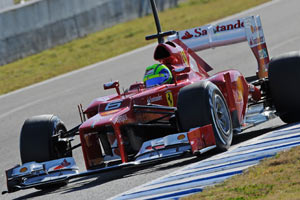I'm not sure who these vocal journalists are talking to in the paddock, but every technical person I've questioned to reaffirm my understanding of the Pullrod-vs-pushrod says there's as good as no difference between them. Its true the loads in the upright and top wishbone are greater and these feed into the chassis. This is a well known by-product of pull-rod and won't have escaped Ferrari when designing this. motion ratio is the same, there's a great deal of misunderstanding in how the pullrod articulates. Although the horizontal pull-rod looks intuitively wrong (& I admit that was my initial assessment of the set up), Its not its angle to the chassis, but the angle to the adjoining wishbone. which is the same for push and pull rod.
With the car suffering under braking\traction, poor in slow turns but good in high speed turns, Suggests Ferraris problems are likely to be aerodynamic pitch sensitivity, causing the downforce balance to shift under braking and acceleration. Exhaust location and or front wing design is likely to a factor. But equally any angle or radius on any surface affecting the flow under the car, could be creating an unexpected vortex and upsetting the flow. Although I've heard whispers the FWEP dealing with the wider Pirellis may be a specific factor

Perhaps where people are now getting confused, is that with pitch sensitivity you need to alter the cars set up to reduce the problems. such as more heave stiffness to minimise attitude changes, this in itself causes handling issues which may be what some observers are seeing as the root cause, and not a symptom.






